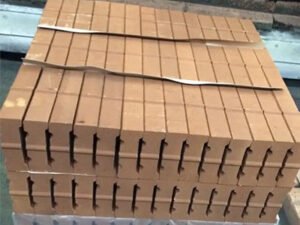Refractory materials, as the name implies, are a kind of refractory materials. Strictly speaking, it is widely used, especially in the field of industrial production. At present, many industrial productions require high-temperature technology as support, which is what we commonly call high-temperature kiln sintering.
However, with the popularization and market recognition of refractory materials in recent years, refractory materials have been involved in life, medicine, people’s livelihood and many other fields related to our production and life.

According to the application in different fields, refractory products can also be subdivided into many categories, such as refractory temperature, acid and alkali combustion environment, high corrosion environment application, high erosion environment application, etc. The refractory materials required for these application scenarios are closely related to their properties. Do you know what these properties represent?
1. What is the slag resistance of refractory materials?
The ability of refractory materials to resist slag erosion at high temperatures is called slag resistance.
The slag comes into contact with the refractory material in liquid form, forms a liquid phase with it, and peels off from its surface; or it enters the interior of the refractory material from the pores, causing volume expansion changes when the temperature changes, resulting in loosening and damage of the refractory material, or it enters the interior to form a new high-melting point spinel phase, causing the ladle and other refractory materials to be damaged due to their inability to be used normally.
Furnace gas and various substances in contact with electric furnace refractory materials may cause the above damage forms.
Therefore, in addition to dissolving on the surface, slag can also invade or penetrate into the interior of the refractory material, expanding the reaction area and depth between the slag and it, causing qualitative changes in the composition and structure near its surface, forming a metamorphic layer that is easily dissolved by the slag, and shortening its service life. This erosion mode of refractory material is mainly related to the porosity of the refractory material. Different refractories with the same components have different erosion rates if their organizational structures are different. The higher the porosity of the refractory material, the weaker the slag resistance.
2. What is the burnout index of refractories?
In the world of refractory materials, there is a very important concept, that is, the “burnout index”. Perhaps you are not familiar with this term, but it is a key link in the performance evaluation of refractory materials.
The burnout index, in simple terms, is an index used to characterize the burning effect of the arc on the furnace wall. The reason why this index is important is that it plays a vital role in determining the process route of smelting. For example, in the ladle refining furnace, the determination of the secondary side voltage is carefully calculated based on the burnout index of the refractory material. If the burnout index is inaccurate, the voltage setting may deviate, which in turn affects the quality and efficiency of the entire smelting process.
3. What is the mineral composition and chemical composition of refractories?
Mineral composition, in simple terms, is the mineral petrographic structural component contained in refractory products. It is like the “gene” of refractory materials, which determines many important properties of the material. For example, the main crystal phase of the familiar magnesia carbon brick, periclase, is the “skeleton” that constitutes its mineral composition.
Did you know? Even refractory materials with the same mineral composition will show completely different properties due to the different sizes, shapes and distributions of mineral crystals. This is like us humans. Although we have similar genes, each person’s appearance, personality and talents are very different.
The mineral composition of refractory materials can be a single crystal phase that “stands out alone” or a combination of polycrystalline phases that “bloom in bloom”. The mineral phases that constitute these phases are currently mainly divided into two types: crystalline phase and glass phase. Among them, the mineral composition that constitutes the main body of refractory materials and has a higher melting point is called the main crystal phase. It is like a “leader” in refractory materials, leading the use properties of the material. The rest of the substances that exist in the gaps between large crystals or aggregates are called matrix, such as the carbon in magnesia carbon bricks. Although the matrix is not as “dazzling” as the main crystal phase, it also plays an indispensable role in refractory materials.
